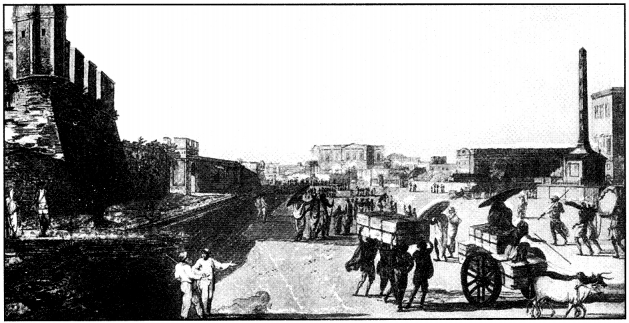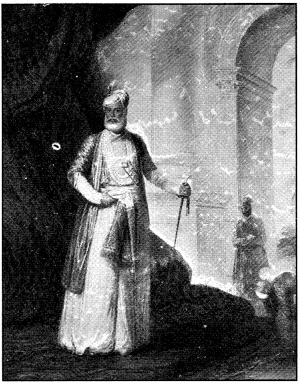Students who are searching for NCERT MCQ Questions for Class 8 History Chapter 10 The Changing World of Visual Arts with Answers Pdf free download are compiled here to get good practice on all fundamentals. Know your preparation level on MCQ Questions for Class 8 Social Science with Answers. You can also verify your answers from our provided The Changing World of Visual Arts Class 8 MCQs Questions with Answers. So, ace up your preparation with MCQ of Chapter 10 History Objective Questions.
The Changing World of Visual Arts Class 8 MCQs Questions with Answers
Appearing Students of Class 8 Exams can download MCQ on The Changing World of Visual Arts Class 8 with Answers from here. By practicing Class 8 History Chapter 10 MCQ with Answers, you can score well in the exam. Download Class 8 SST History Chapter 10 MCQ in PDF format from the below access links and start practicing on a regular basis for better subject knowledge.
Question 1.
Nawab Mubarakuddaulah belongs to:
(a) Bombay
(b) Poona
(c) Murshidabad
(d) Mysore
Answer
Answer: (c) Murshidabad
Question 2.
Abanindranath Tagore was the nephew of:
(a) Rabindranath Tagore
(b) Raja Ravi Varma
(c) Mubrakuddaulah
(d) Nand Lai Bose
Answer
Answer: (a) Rabindranath Tagore
Question 3.
Damayanthi was painted by:
(a) Raja Ravi Varma
(b) Thomas Daniell
(c) William Daniell
(d) David Wilkie
Answer
Answer: (a) Raja Ravi Varma
Question 4.
The art of making portraits is known as:
(a) Engraving
(b) Portraiture
(c) Miniature
(d) Picturesque
Answer
Answer: (b) Portraiture
Question 5.
The storming of Seringapatam was painted by:
(a) David Wilkie
(b) William Daniell
(c) Thomas Daniell
(d) Rober Kerr Porter
Answer
Answer: (d) Rober Kerr Porter
Question 6.
In which styles the victoria Terminus was built?
(a) Gothic style
(b) Dorian style
(c) Corinthian style
(d) Classical Greek and Roman Style
Answer
Answer: (a) Gothic style
The victoria Terminus, the railway station in Bombay was built in Gothic style. The new buildings that came up in the mid-nineteenth century in Bombay, were mostly in this style.
Question 7.
From where did the style of architecture was borrowed in Calcutta?
(a) Doric
(b) Gothic
(c) Classical style of Greece and Rome
(d) Corinthian
Answer
Answer: (c) Classical style of Greece and Rome
Central Post Office in Calcutta has rounded arches and pillars. The style of architecture was borrowed from Classical style of Greece and Rome.
Question 8.
One of the first history paintings was produced by whom?
(a) Francis Hayman
(b) Johann Zoffany
(c) Tilly Kettle
(d) William Daniell
Answer
Answer: (a) Francis Hayman
One of the first history paintings was produced by Francis Hayman in 1762 and placed on public display in the Vauxhall Gardens in London.
Question 9.
What do you mean by Realism?
(a) Faithfully observe and depict the subject
(b) Faithfully observe the landscape
(c) Draw from their imagination
(d) Draw and paint landscape
Answer
Answer: (a) Faithfully observe and depict the subject
Realism meant a belief that artists had to faithfully observe and depict the subject.
Question 10.
What is the name of an art form where impression is printed on paper and cloth?
(a) Motif
(b) Embossing
(c) Engraving
(d) Stamping
Answer
Answer: (c) Engraving
An art form where impression is printed on paper and cloth from the design on wood or metal are called engraving.
Question 11.
Why did the Muhammad Ali khan appointed artists?
(a) Paint modern paintings
(b) Paint historical paintings
(c) Paint oil paintings
(d) None of these
Answer
Answer: (c) Paint oil paintings
Muhammad Ali khan, the Nawab of Arcot, commissioned two European artists to paint oil paintings and portraits.
Question 12.
What are history paintings?
(a) Painting showing Indian victories in British
(b) Painting showing Indian victory over Mughal
(c) Painting showing British victories in India
(d) None of these
Answer
Answer:(c) Painting showing British victories in India
The paintings, which display British victories in India, are called history paintings. This tradition sought to dramatize and recreate various episodes of British imperial history, and enjoyed great prestige and popularity.
Question 13.
Why were the paintings on Indian themes displayed in Britain?
(a) To give idea about Indian poor
(b) To give idea about new land conquer
(c) To give idea about wealth in India
(d) None of these
Answer
Answer: (b) To give idea about new land conquer
The paintings on Indian themes were displayed in Britain to give an idea to the people about the new land conquered by the Company.
Question 14.
Why did the European portrait painters come to India?
(a) Paint for free
(b) For getting the contract
(c) To paint only for king
(d) None of these
Answer
Answer: (b) For getting the contract
The European portrait painters came to India with the hope of getting the contract for making the portraits of European officials and Indian rulers.
Question 15.
What do you mean by Engraving?
(a) Oil painting
(b) Impression printing
(c) British printing
(d) None of these
Answer
Answer: (b) Impression printing
An art form where impression is printed on paper and cloth from the design on wood or metal are called engraving.
Question 16.
Who was Okakura Kakuzo?
(a) Japanese research
(b) Indian research
(c) British research
(d) None of these
Answer
Answer: (a) Japanese research
Okakura Kakuzo was a Japanese research scholar who did research on Japanese art. In 1904, he published a book called “The Ideals of the East” in Japan. He wrote “Asia is one” in the opening lines of the book.
Question 17.
Where is the victoria Terminus situated?
(a) Delhi
(b) Madras
(c) Bombay
(d) None of these
Answer
Answer: (c) Bombay
The victoria Terminus, the railway station in Bombay was built in Gothic style. The new buildings that came up in the mid- nineteenth century in Bombay, were mostly in this style.
Question 18.
who tried to create a style that was both modern and national?
(a) Francis Hayman
(b) Johann Zoffany
(c) Raja Ravi Verma
(d) None of these
Answer
Answer: (c) Raja Ravi Verma
Raja Ravi Verma was one of the first artists who tried to create a style that was both modern and national. He painted on canvas the scenes from both Ramayana and Mahabharata.
Question 19.
Which Post Office bought the style of architecture from Greece and Rome?
(a) Delhi post office
(b) Central post office Calcutta
(c) Bombay post office
(d) None of these
Answer
Answer: (b) Central post office Calcutta
Central Post Office in Calcutta has rounded arches and pillars. the style of architecture was borrowed from Greece and Rome.
Question 20.
In which year painting was produced by Francis Hayman?
(a) 1789
(b) 1753
(c) 1747
(d) 1762
Answer
Answer: (d) 1762
One of the first history paintings was produced by Francis Hayman in 1762 and placed on public display in the Vauxhall Gardens in London.
Write true (T) or false (F)
1. From the 18th century a stream of European artists came to India along with the British traders and rulers.
Answer
Answer: True
2. Portraiture is the art of making portraits.
Answer
Answer: True
3. There was a 3rd category of imperial art called history painting.
Answer
Answer: True
4. Imperial history paintings sought to create a private memory of British officers.
Answer
Answer: False
5. Tipu Sultan was defeated at the Battle of Bedara.
Answer
Answer: False
Match the following
1.
| Column-I | Column-II |
| 1. Mural | (a) Patuas |
| 2. Battle of Pollilur | (b) Arcot |
| 3. Scroll Painters | (c) Mysore |
| 4. Muhammad Ali Khan | (d) A wall painting |
| 5. Tipu Sultan | (e) 1780 |
Answer
Answer:
| Column-I | Column-II |
| 1. Mural | (d) A wall painting |
| 2. Battle of Pollilur | (e) 1780 |
| 3. Scroll Painters | (a) Patuas |
| 4. Muhammad Ali Khan | (b) Arcot |
| 5. Tipu Sultan | (c) Mysore |
Fill in the Blanks
1. Storming of Seringapatam painted by ……………………… .
Answer
Answer: Rober Kerr Porter
2. Muhammad Ali Khan commissioned two visiting European artists ……………………… and ……………………… .
Answer
Answer: Tilly Kettle, George Willison
3. Many European portrait painters came to India is search of profitable ……………………… .
Answer
Answer: commission
4. Clive street is in ……………………… .
Answer
Answer: Calcutta
5. European artists brought with them new styles and new ……………………… of paintings.
Answer
Answer: conventions
Picture Based Questions
1. Who was the painter of the following painting?

Answer
Answer: Raja Ravi Varma.
2. What does the pictures describes?

Answer
Answer: It describes about the Clive street in Calcutta draw by Thomas and William Daniell, 1786.
3. Whom does the portrait belongs to.

Answer
Answer: Muhammad Ali Khan of Arcot.
Use the above-provided NCERT MCQ Questions for Class 8 History Chapter 10 The Changing World of Visual Arts with Answers Pdf free download and get a good grip on the fundamentals of real numbers topic. Need any support from our end during the preparation of The Changing World of Visual Arts Class 8 MCQs Multiple Choice Questions with Answers then leave your comments below. We’ll revert back to you soon.